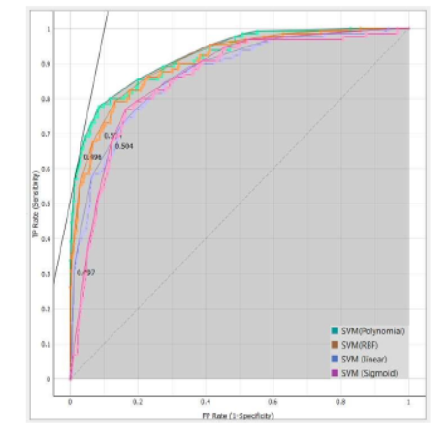


Indian Journal of Science and Technology
DOI: 10.17485/IJST/v17i19.3264
Year: 2024, Volume: 17, Issue: 19, Pages: 1947-1960
Original Article
M Jayanthi Rao1, B Ramakrishna2, K G Durga Prasad3, B Vijay1, T Panduranga Vital1*, M Ramanaiah4
1Department of Computer Science and Engineering, Aditya Institute of Technology and Management, Tekkali, 532201, Andhra Pradesh, India
2Department of Mechanical Engineering, Aditya Institute of Technology and Management, Tekkali, 532201, Andhra Pradesh, India
3Department of Mechanical Engineering, G.V.P. College for Degree and P.G. Courses (A), Visakhapatnam, 530045, Andhra Pradesh, India
4Department of Chemistry, Aditya Institute of Technology and Management, Tekkali, 532201, Andhra Pradesh, India
*Corresponding Author
Email: [email protected]
Received Date:05 January 2024, Accepted Date:10 April 2024, Published Date:03 May 2024
Objectives: The research aims to enhance breast cancer detection accuracy and effectiveness using deep transfer learning and pre-trained neural networks. It analyses breast ultrasound images and identifies important characteristics using pre-trained networks. The goal is to create a more efficient and accurate automated system for breast cancer detection. Methods: The study uses breast ultrasound cancer image data from the Kaggle Data Repository to extract informative features, identify cancer-related characteristics, and classify them into benign, malignant, and normal tissue. Pre-trained Deep Neural Networks (DNNs) extract these features and feed them into a 10-fold cross-validation SVM classifier. The SVM is evaluated using various kernel functions to identify the best kernel for separating data points. This methodology aims to achieve accurate classification of breast cancer in ultrasound images. Findings: The study confirms the effectiveness of deep transfer learning for breast cancer detection in ultrasound images, with Inception V3 outperforming VGG-16 and VGG-19 in extracting relevant features. The combination of Inception V3 and the SVM classifier with a polynomial kernel achieved the highest classification accuracy, indicating its ability to model complex relationships. The study demonstrated an AUC of 0.944 and a classification accuracy of 87.44% using the Inception V3 + SVM polynomial. Novelty: This research demonstrates the potential of deep transfer learning and SVM classifiers for accurate breast cancer detection in ultrasound images. It integrates Inception V3, VGG-16, and VGG-19 for breast cancer detection, demonstrating improved classification accuracy. The combination of Inception V3 and SVM (polynomial) achieved a significant AUC (0.944) and classification accuracy (87.44%), outperforming other models tested. This research underscores the potential of these technologies for accurate breast cancer detection in ultrasound images.
Keywords: Breast Cancer, Deep Learning, Feature Extraction, Inception-v3, SVM, Transfer Learning
© 2024 Rao et al. This is an open-access article distributed under the terms of the Creative Commons Attribution License, which permits unrestricted use, distribution, and reproduction in any medium, provided the original author and source are credited. Published By Indian Society for Education and Environment (iSee)
Subscribe now for latest articles and news.